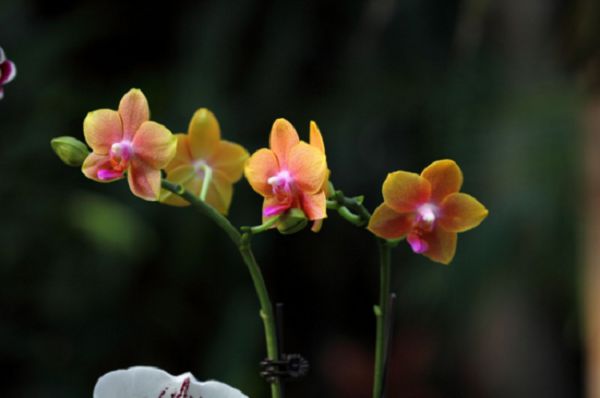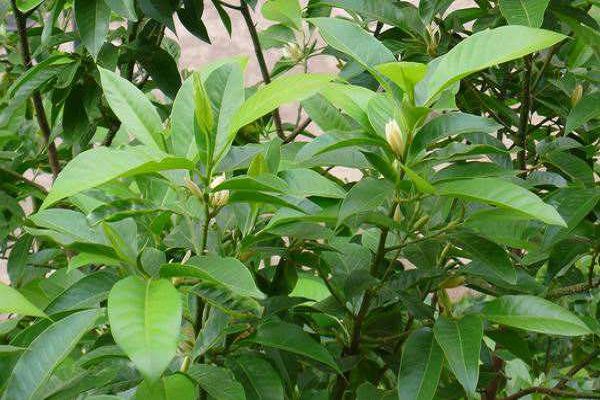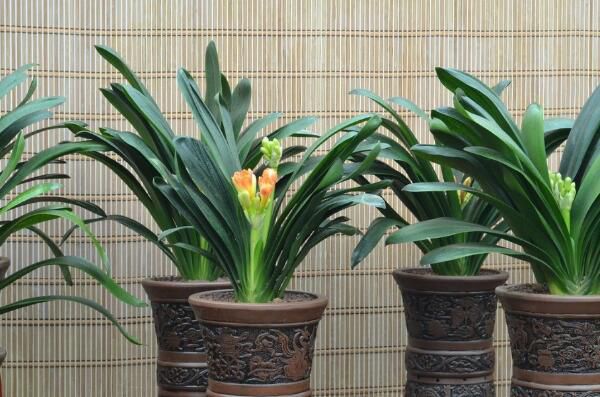Orchid culture methods, flower friends two years of orchid culture experience sharing

Orchids are the top ten famous flowers in China, and people have always regarded orchids as a symbol of nobility and elegance, and juxtaposed with "plum, bamboo and chrysanthemum", collectively known as "four gentlemen". The following is a summary of Hua you's experience in orchid culture in the past two years, which is very helpful to orchid culture.
Sharing the experience of orchid culture methods and planting materials can be said to be the most troublesome thing in orchid cultivation at the beginning. At the beginning, when you see the bark, you pick the bark, when you see the humus soil, you dig it, get it back, screen it, and cook it, so it's fried, stuffy, and stewed. When I heard that others said that my plant had some shortcomings, I suddenly felt stupid. Is also a certain degree of treasure to find good material formula, see a treasure of June 1, eight in one, ten in one quickly bought to turn the basin again and again tired and happy. As a result, only soil and pots are left to toss and turn.
Watering is the second biggest difficulty of just raising orchids. If you don't do it or water it, how many people will be overcome by watering. It is said that the weight of pots and chopsticks has always been out of control over and over again. After reading an article in Friends Space, you will learn something as follows:
Water is an essential element for plant growth. The content of water in plants is very high, up to more than 80 {bf}. Plants can grow normally only when they contain enough water. Because all kinds of biochemical reactions in plants, such as nutrient conversion, cell division and photocooperation, must be carried out with water. In the process of growth, plants usually elongate or expand their cells by absorbing water. If there is a lack of water, the swelling pressure of plant cells decreases, and the growth slows down or stops.
The main flow of water in plants. For terrestrial plants, water is inhaled by the root hair of the plant and flows along the root to the stem, leaf, flower and fruit. It is consumed by participating in various growth activities in the plant, and part of the water is lost into the atmosphere through the surface of the stem, leaf, flower and fruit.
The main effect of water on plants. One is to provide the necessary water for plant growth. The second is to act as a solvent for transporting various nutrients. Organic fertilizer, inorganic fertilizer and other nutrients needed by plants are dissolved in water and then transported to the plant body by water. The third is that the plant dissipates the radiant heat absorbed by the plant by losing water into the atmosphere to avoid a substantial rise in body temperature. The fourth is the gasification of environmental water, which can take away a lot of heat energy and adjust the ambient temperature.
The active protection of plants to water. When there is not enough water in the plant, it will instinctively close the surface stomata, reduce the rate of water loss and prevent the loss of a large amount of water. Plants also close their stomata during dormancy, at night or when it is hot and dry at noon in summer to reduce the rate of water loss and protect water in the body.
The amount of water consumed and lost by plants and the amount of water inhaled by the roots must be balanced. When the former is greater than the latter, the water content of the plant decreases, and the water potential and swelling pressure also decrease accordingly, affecting the normal growth of the plant. When beyond a certain limit, the normal physiological process of the plant will be seriously disturbed, causing the plant to suffer damage until death. This condition of water deficit is called water stress in theory.
The harm of water to plants. When there is too much water in the soil, the soil waterlogging will block the oxygen supply of the root system, hinder the aerobic respiration and cause damage to the plant root system.
To sum up, our principle of water supply in the process of Yilan is to give enough water as much as possible without damaging the root system, and do not advocate dry maintenance. Especially during the growing period, do not buckle the water, otherwise the seedling will be the bud.
Some people may want to ask: whenever the temperature is high, pour the seedlings to the flood, how to do without withholding the water? This problem, I personally think, it is not the fault of water, as long as you use clean potable water. It should be fertilizer (medicine), especially the plant material, and the fault of temperature. Hey hey, put the blame on someone else. Stay and see, maybe you'll understand something.
- Prev

Why does the white orchid not blossom? the vigorous growth of branches and leaves of the white orchid will lead to non-flowering.
Why does the white orchid not blossom? the vigorous growth of branches and leaves of the white orchid will lead to non-flowering.
- Next

Plant culture is very easy to lead to rotten roots, gentleman orchid rotten roots how to do?
Plant culture is very easy to lead to rotten roots, gentleman orchid rotten roots how to do?
Related
- Is the orchid suitable for indoor use? Is it good for the body?
- How to prevent the empty root of orchids?
- What to do after the crab claw orchid is withered?
- Why are the leaves of orchids always yellow? Fertilizing and watering.
- Can the root of the gentleman orchid be saved if it is rotten?
- Diagnosis and treatment of cotton-blowing beetle insects in Cymbidium
- There is a way for a gentleman's orchid to rot.
- What is the most suitable temperature and humidity for the orchid?
- How to raise a gentleman's orchid? Cultivation techniques of Cymbidium
- How to prepare the nutritive soil for the cultivation of Cymbidium

